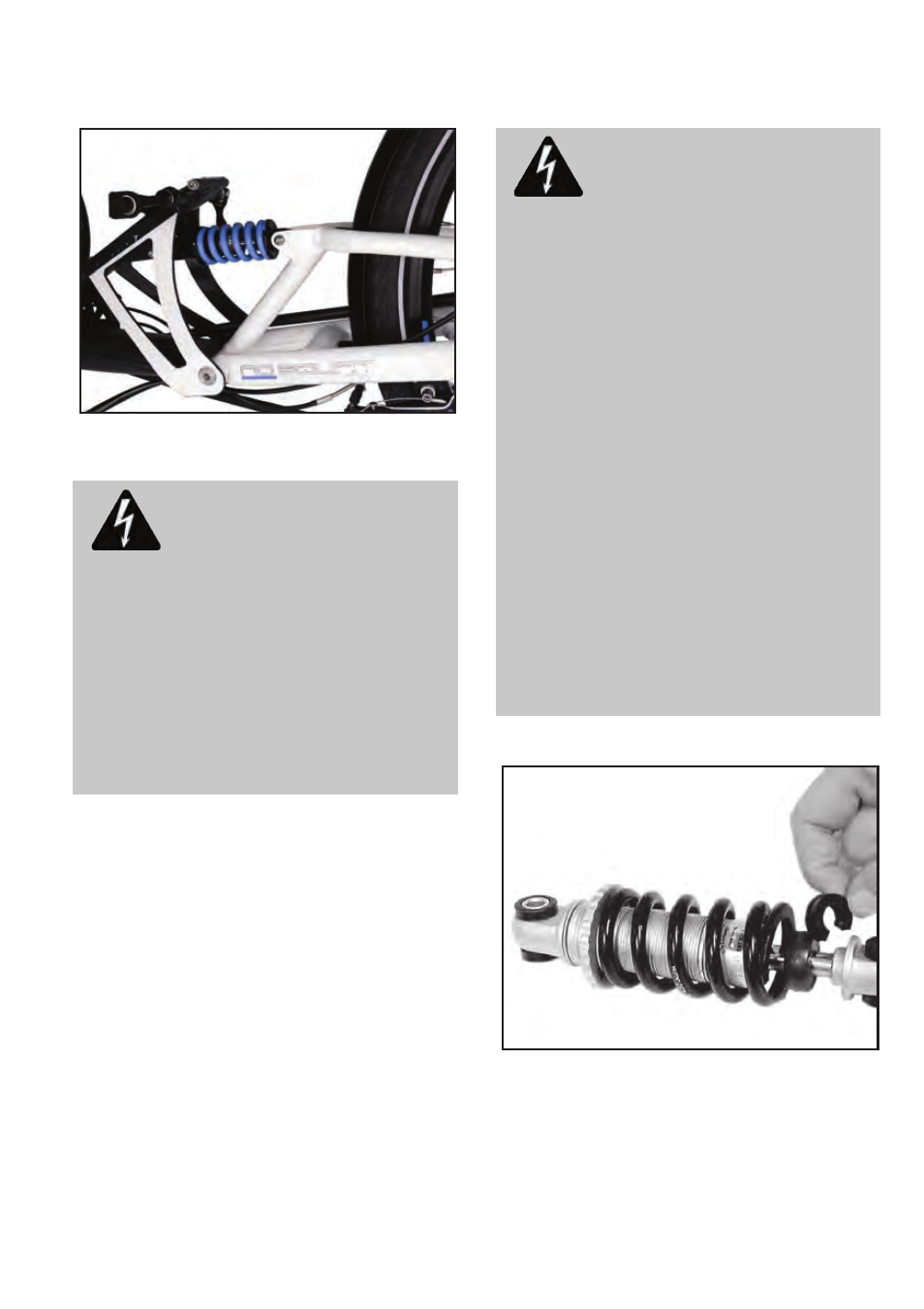Rear suspension element – HP Velotechnik trikes User Manual
Page 72

Rear suspension element
68
Steel spring suspension element with fixed damping
rate.
Danger! The adjustment ring has
always to be screwed on so far that the
spring has no play when unloaded. Other-
wise the adjustment ring could come loose
through shocks while riding and the slotted
rear spring retention disc comes off. In
that case the suspension element may be
damaged or the rear wheel can hit the
frame or rear rack, which may lead to se-
rious falls. Always have an initial preload of
at least half a turn on the spring.
The adjustment ring should be turned not
more than five turns (measured from the re-
laxed position) towards the spring. If the sus-
pension compresses still too far even after six
turns, the spring is too soft and has to be re-
placed by a harder spring. A too high preload
with a too soft spring will not take advantage
of the full comfort potential.
Danger! Take care that the rear
wheel or mudguard or suspension element
never hit the frame, seat, rear rack or lug-
gage box while the suspension is fully com-
pressed.
Therefore relax the spring completely by
turning the spring retention disc on the
thread of the spring element as far as pos-
sible (before this, push the possibly existing
safety spring ring from its slot in the
threaded section as far as possible). Have a
second person sit down on the tricycle and
make the suspension bottom out by lean-
ing on the seat or the rear rack.
If the distance between the wheel or mud-
guard and the frame, seat, or rear rack is
smaller than 1 cm you will have to mount
an additional spacer. In case you don't, the
mudguard may break suddenly or the rear
wheel might be blocked which can lead to
serious crashes.
The suspension travel is adjusted by adding clips to the
piston rod of the spring element.